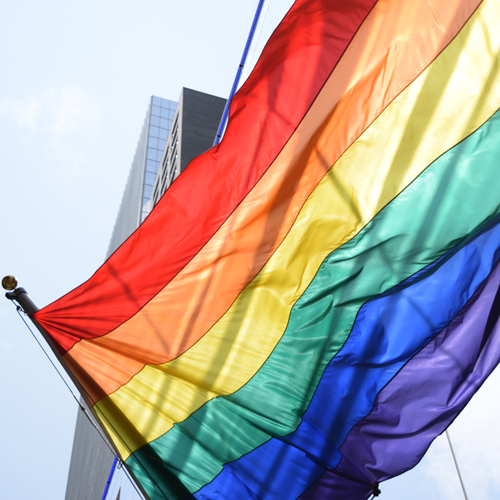You’ve seen the rainbow flags and inhaled the festive air. Around the world, June is recognized as LGBT* (Lesbian, Gay, Bisexual, and Transgender) Pride Month. Pride month commemorates a tipping point in queer history – the Stonewall Uprising, which lasted 6 days in Manhattan in June 1969 as police clashed with LGBT protesters. Today, Pride celebrations attract millions of participants each year as queer communities and allies honor the queer identity through parades, workshops, parties, concerts and more.
Another milestone occurred in June of last year, when the Supreme Court ruled that Title VII of the Civil Rights Act of 1964, which bars employment discrimination based on race, religion, national origin, and sex, also applies to sexual orientation and gender identity. Our laws are becoming more inclusive, and a growing number of organizations are following suit.
Here are 6 ways your organization can promote inclusion during Pride this month.
- Educate your workforce about LGBT and Pride history, and issues that exist in the queer community. Does your company send out internal newsletters? This is a great time to incorporate the history of Pride, the importance of the commemoration, and some interesting facts about Pride to capture engagement. Make sure your company training includes LGBT issues and be sure to discuss specific scenarios and how to respond.
- Empower your workforce to call out bias and discrimination when they see it by revisiting your internal procedures for employees to report incidents. More than 40% of LGBT employees feel discriminated against in the workplace, compared to 29% of their heterosexual colleagues. Ensure that employees can safely and confidentially report behavior that violates your policies against bias and discrimination.
- Create safe spaces to listen to the experiences of LGBT colleagues. One organization hosts safe conversation spaces called Roundtables, where a limited number of employees sign up and discuss their backgrounds, experiences, and how the workplace can be improved to make them feel more included. Executive leaders are not permitted to attend, so employees feel safe to express themselves. Also consider creating an ally program to engage other colleagues to create safe environments for LGBT employees.
- Connect with professional organizations in your industry that empower LGBT communities. The National LGBT Bar Association is a national association of lawyers, judges, and other legal professionals, law students, activists, and affiliated LGBT legal organizations that promote justice in and through the legal profession for the LGBT community. In the real estate industry, NAGLREP (The National Association of Gay and Lesbian Real Estate Professionals) is a network of LGBT and allied real estate professionals that strengthen business connections and advocate for LGBT rights as it relates to housing and discrimination laws. Research organizations in your industry that do similar work, establish a partnership, and encourage your workforce to participate.
- Make it clear that your workforce to update their email signatures to include their pronouns. Lawrence wrote on the use of pronouns in the workplace previously, and I will provide a few more practical suggestions about that topic in an upcoming post. The rise of pronouns enables us to select how we’d like to be identified. Be sure to educate your workforce about pronouns and ensure that employees respect pronouns that individuals use for themselves.
- Rethink Dress Codes so language and expectations are specific and reflect the function needed. Many traditional policies reaffirm stereotypical gender norms and don’t serve a purpose in today’s workplace. For example, in a non-uniform role, instead of requiring pants, the dress code could specify the clothing needs “to permit the employee to lift 50 pounds”.
Your organization’s commitment to diversity, equity, and inclusion includes sexual orientation and gender identity as much as it includes race. By exploring these options, you create more ways for your organization to include and empower the LGBT community in your workforce.
*You may see the LGBT acronym as LGBTQ or LGBTQIA+, where the additional letters stand for queer, intersex and asexual.










